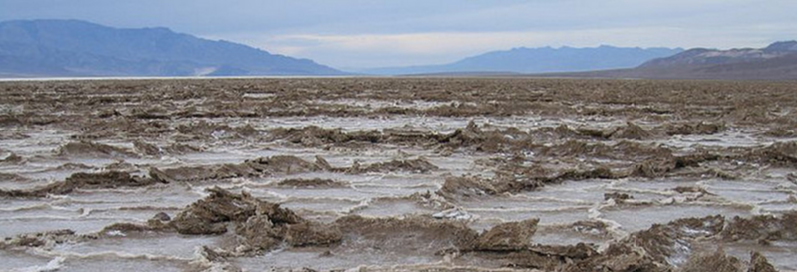This is the most common question Death Valley rangers are asked.
Looking across the vast saltpan, with craters and crystalized formations completely devoid of any obvious life, Death Valley looks extraterrestrial. Yet, just underneath the salt, the soil teems with communities of microbes.
Microbes are single-celled organisms that are invisible to the unaided eye. They consist primarily of the biological groups bacteria and archaea, and they inhabit every nook of Earth. Microbes that thrive in the most challenging of conditions are called extremophiles—they are the ultimate survivors, living in places we dare only to visit. Some extremophiles are specialized to life above boiling, others to life below freezing, while the bacteria and archaea of Death Valley’s harsh, saltpan environment thrive in extreme salinity.
Despite their diminutive size, bacteria vary dramatically in their physiological functions, in the resources they can consume, and in the physical and chemical conditions they can tolerate. Even within the unforgiving climate of Death Valley, bacteria have continued to evolve and to specialize into microhabitats that differ as subtly as the soils’ slope angle and sun exposure or a Kit Fox’s gut microbiome versus that of a Big Horn Desert Sheep. To this day we are still only beginning to uncover the vast amount of bacterial diversity and functioning. Every study of extreme environments reveals previously unknown groups of bacteria. Microbial ecologists are challenged to keep up with the evolutionary accomplishments of the bacteria, and to identify the most newly evolved bacterial species.
All this being said, we do know one thing for sure. Death Valley is very much alive.
Originally posted December 8, 2014 on Death Valley National Park


